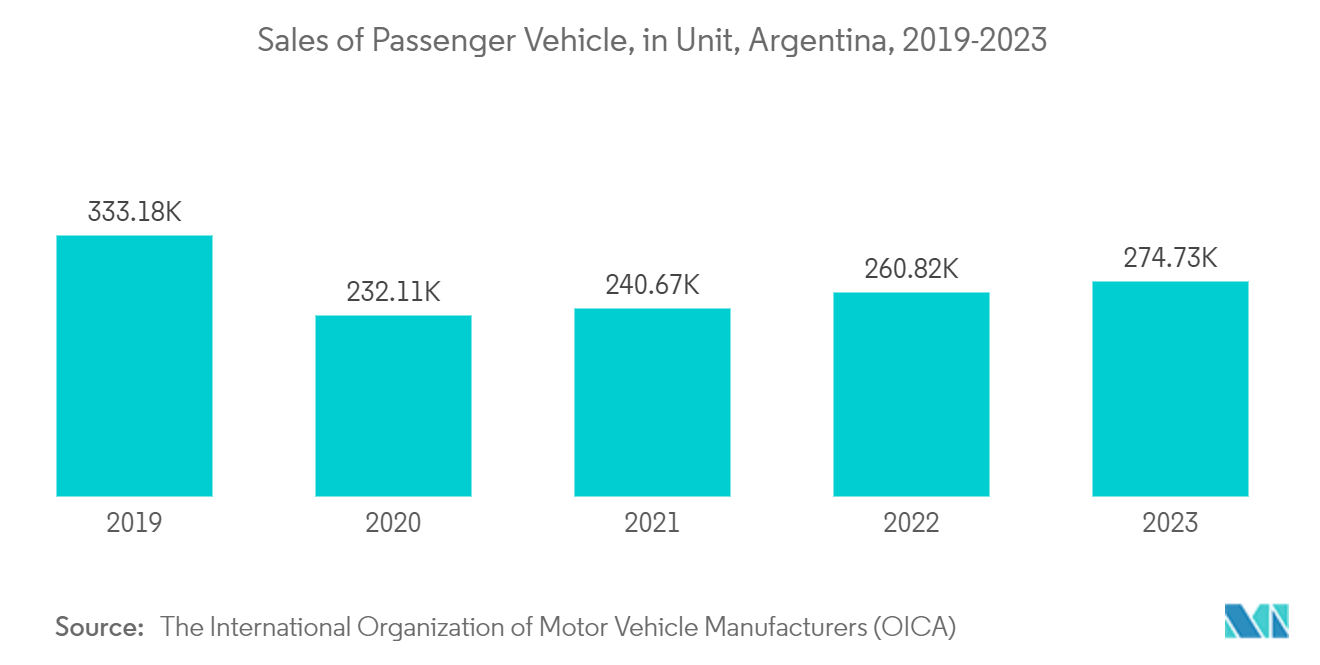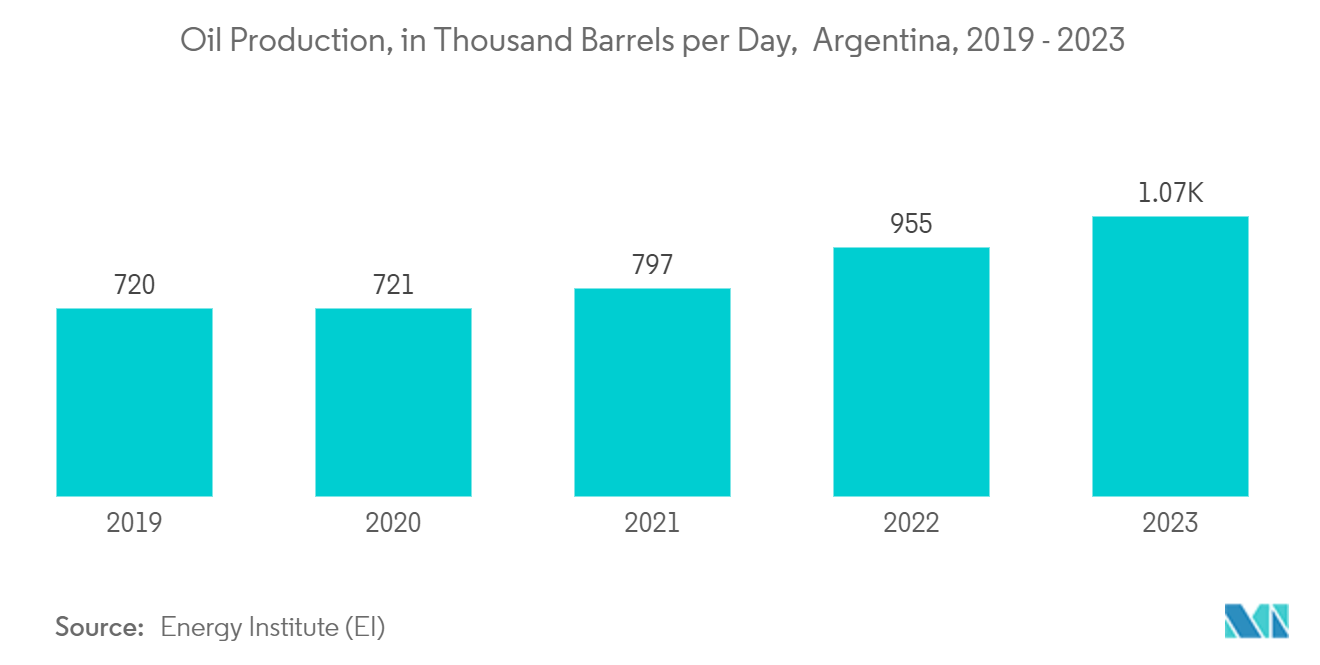Market Trends of Argentina Lubricants Industry
Argentina's Expanding Vehicle Fleet Boosts Engine Oil Consumption
- Argentina's lubricants market is experiencing significant growth, driven by the nation's expanding vehicle fleet. As the number of vehicles on Argentine roads rises, so does the demand for engine oil, a crucial component of vehicle maintenance. This heightened demand for engine oil has, in turn, strengthened Argentina's overall lubricants market.
- The growth of Argentina's vehicle fleet can be attributed to several factors: increased consumer spending, improved economic conditions, and a rise in commercial vehicles.
- Recent data reveals a fleet expansion of over 10% in the last five years, predominantly driven by new registrations of passenger cars and commercial vehicles. This surge has naturally translated into heightened engine oil consumption as vehicle owners strive to preserve and prolong their vehicles' lifespans
- The rising demand for engine oil has not only bolstered Argentina's lubricant market but has also attracted the attention of major lubricant manufacturers. These companies are making significant investments in Argentina, drawn by the surging demand.
- The automotive industry stands as one of Argentina's most vital sectors. Factors such as a growing appetite for lightweight, high-performance vehicles in emerging markets, the establishment of automotive hubs, and rising disposable incomes are driving the demand for lubricants in the region.
- In 2023, Argentina's vehicle fleet numbered 15,299,751 (encompassing automobiles and both light and heavy commercial vehicles, but excluding trailers). This marked a 1.46% increase from the previous year.
- According to ACARA (the Association of Automobile Dealers of the Argentine Republic), 449,438 cars, including light commercials and heavy commercials, were registered in the country in 2023. This is a 10.2% jump from the previous year when 407,875 cars were registered.
- However, as of July 2024, car registrations dipped to 42,892, a slight decrease from the 44,117 recorded during the same timeframe the previous year.
- Government initiatives are actively promoting vehicle production in Argentina. Such measures are anticipated to not only boost the automotive sector but also positively influence the lubricants market.
- In January 2023, the Argentine government, adhering to the 2022 Automotive Industry Promotion Law, exempted automotive exports from additional duties. This strategic move, alongside tax incentives and a designated focus on auto parts production, highlights the government's dedication to fortifying the automotive sector.
- With supportive policies and strategic investments, Argentina's automotive sector is on the brink of a significant upswing. This anticipated growth promises heightened production, strong export numbers, and improved global trade relations, setting a favorable stage for high-performance lubricants in the market.

Industrial Segment to Dominate the Market
- In the industrial sector, lubricants are indispensable, offering advantages that transcend mere friction and wear reduction. Selecting the appropriate lubricant enables industries to boost efficiency, cut costs, and champion sustainable production methods.
- Mining operations depend heavily on lubricants to ensure their equipment runs smoothly. Mining machinery faces intense stress from heavy loads, constant movement, and challenging conditions.
- Argentina's mining sector is teeming with potential. While the sector is active and has many upcoming projects, the country's abundant natural resources remain largely untapped. In 2023, mining exports increased by 4.3%, reaching USD 4.5 billion, driven by high lithium demand. With its vast resources, Argentina aims to ramp up production, targeting annual exports surpassing USD 18 billion by 2030.
- Argentina's primary mineable ore minerals currently include gold, silver, and copper. Of particular note, Argentina stands as the world's third-largest holder of lithium reserves. Despite this, over 70% of the country's proven lithium resources remain unexplored. Highlighting its potential, lithium mining emerges as Argentina's fastest-growing segment. In 2022, the nation exported 44,000 tons of lithium, valued at USD 696 million, constituting about 18% of its total mining exports. China led as the primary importer, accounting for 41.5% of Argentina's lithium exports, trailed by Japan at 30.7%, South Korea at 12.8%, and the US at 9%.
- In the oil and gas industry, lubricants are crucial, serving purposes beyond just reducing friction. They ensure the intricate machinery operates safely, efficiently, and reliably throughout the oil and gas lifecycle. By minimizing wear and tear, lubricants not only extend equipment lifespan but also boost energy efficiency.
- Moreover, data from Argentina’s Ministry of Economy reveal that in December 2023, the country achieved a record-breaking oil production of 699,684 barrels per day.
- The International Energy Agency (IEA) forecasts a significant surge in Argentina’s light-tight oil supply. From 520,000 barrels per day (bpd) in 2023, the production is projected to soar to 830,000 bpd by 2030. Given Argentina's minimal crude oil imports, this uptick in domestic production is poised to drive the nation toward becoming a notable oil exporter.
- Lubricants serve as the lifeblood of agricultural equipment, ensuring smooth operations, longevity, and efficiency. Proper lubrication not only extends machinery life by reducing wear and tear but also shields metal surfaces from rust and corrosion, which are prevalent in harsh agricultural settings. Well-lubricated equipment not only operates more efficiently, leading to lower fuel consumption but also experiences fewer breakdowns, translating to reduced repairs and downtime. Ultimately, this results in heightened productivity and enhanced yields.
- According to Agrievolution, a consortium of 13 trade associations, the Argentine agricultural machinery market was valued at USD 1.26 billion in 2023. Projections suggest growth, with expectations to reach USD 1.67 billion by 2028, translating to a CAGR of 5.80% during the forecast period (2023-2028).
- Lubricants are used in different power generation sectors, including wind energy, hydropower, and thermal power plants.
- Argentina holds only 0.36% of the global onshore wind energy capacity. As per the data from the International Renewable Energy Agency (IRENA) in 2024, Argentina's wind industry added 3,977 megawatts (MW) of turbine capacity in 2023, marking an 11.1% rise from the prior year. This achievement ranks as the third-highest wind capacity installation in South and Central America.
- Given these dynamics, the rising demand in the industrial sector is set to further boost the demand for lubricants in the coming years.


